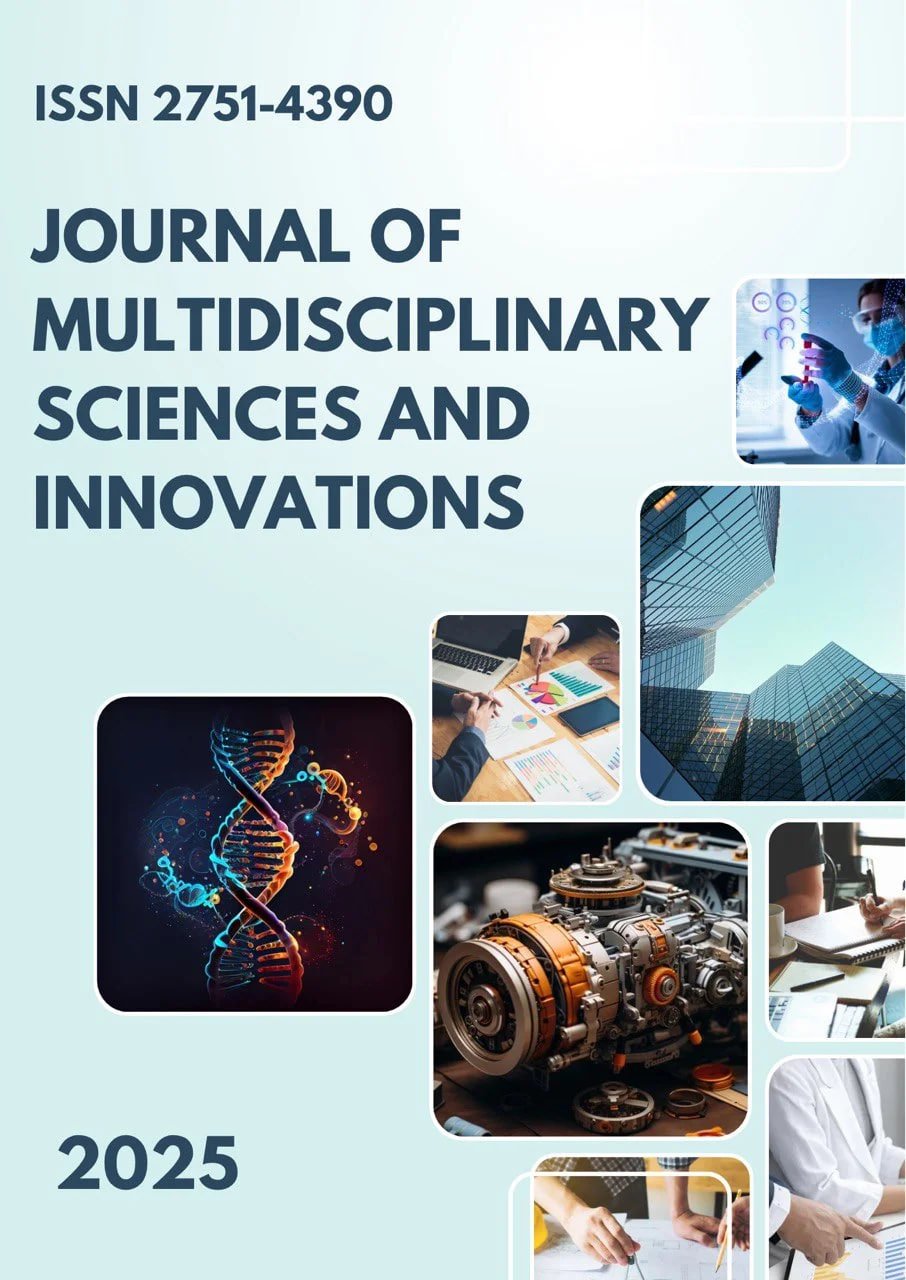INTEGRATING REMOTE SENSING AND GIS-BASED MACHINE LEARNING FOR CROP CLASSIFICATION: GLOBAL TRENDS AND EMERGING RESEARCH DIRECTIONS (2018–2026)
Main Article Content
Abstract
Over the past decade, crop classification has become a critical research domain at the intersection of Remote Sensing (RS), Geographic Information Systems (GIS), and Machine-Learning (ML) techniques. This bibliometric and thematic analysis examines 3921 peer-reviewed publications indexed in Scopus (2018–2026) selected through a targeted Boolean query combining RS, GIS, and ML concepts while excluding non-agricultural subject areas. Results reveal a consistent rise in publication activity since 2018, dominated by Earth-observation datasets such as Sentinel-1/2, Landsat-8/9, MODIS, and PlanetScope. Random Forest (RF) and Support Vector Machine (SVM) remain the most frequently applied supervised classifiers, whereas deep-learning frameworks (CNNs, U-Net, ResNet) show rapid adoption for multisensor and time-series analysis. Thematic mapping indicates a transition from traditional spectral-index-based methods toward hybrid approaches integrating SAR-optical fusion, object-based classification, and GeoAI-driven decision systems. Keyword-co-occurrence networks highlight four primary clusters: (1) machine-learning and algorithmic optimization, (2) multi-sensor data fusion and spectral indices, (3) spatial modeling and GIS-based validation, and (4) applications in crop monitoring, yield estimation, and climate-impact assessment. The United States, China, India, and European countries lead in research output, while Central Asia and Africa exhibit emerging contributions. Overall, this study outlines global research patterns, methodological evolution, and future priorities for RS-GIS-based crop classification, emphasizing reproducibility, explainable AI, and integration of ground-truth datasets to enhance agricultural decision-support systems.
Downloads
Article Details
Section

This work is licensed under a Creative Commons Attribution 4.0 International License.
Authors retain the copyright of their manuscripts, and all Open Access articles are disseminated under the terms of the Creative Commons Attribution License 4.0 (CC-BY), which licenses unrestricted use, distribution, and reproduction in any medium, provided that the original work is appropriately cited. The use of general descriptive names, trade names, trademarks, and so forth in this publication, even if not specifically identified, does not imply that these names are not protected by the relevant laws and regulations.
How to Cite
References
Alami Machichi, M., mansouri, loubna E., imani, yasmina, Bourja, O., Lahlou, O., Zennayi, Y., Bourzeix, F., Hanadé Houmma, I., & Hadria, R. (2023). Crop mapping using supervised machine learning and deep learning: A systematic literature review. International Journal of Remote Sensing, 44(8), 2717–2753. https://doi.org/10.1080/01431161.2023.2205984
Breiman, L. (2001). Random Forests. Machine Learning, 45(1), 5–32. https://doi.org/10.1023/A:1010933404324
Bronzes, A., Hein, L., Groeneveld, R., & Pulatov, A. (2025). A comparison of valuation methods for cultural ecosystem services in support of ecosystem accounting. One Ecosystem, 10. https://doi.org/10.3897/oneeco.10.e108556
Che, H., Pan, Y., Xia, X., Zhu, X., Li, L., Huang, Y., Zheng, X., & Wang, L. (2024). A new transferable deep learning approach for crop mapping. GIScience & Remote Sensing, 61(1), 2395700. https://doi.org/10.1080/15481603.2024.2395700
Chen, B., Zheng, H., Wang, L., Hellwich, O., Chen, C., Yang, L., Liu, T., Luo, G., Bao, A., & Chen, X. (2022). A joint learning Im-BiLSTM model for incomplete time-series Sentinel-2A data imputation and crop classification. International Journal of Applied Earth Observation and Geoinformation, 108, 102762. https://doi.org/10.1016/j.jag.2022.102762
Kraemer, R., Prishchepov, A. V., Müller, D., Kuemmerle, T., Radeloff, V. C., Dara, A., Terekhov, A., & Frühauf, M. (2015). Long-term agricultural land-cover change and potential for cropland expansion in the former Virgin Lands area of Kazakhstan. Environmental Research Letters, 10(5), 054012. https://doi.org/10.1088/1748-9326/10/5/054012
Li, Q., Tian, J., & Tian, Q. (2023). Deep Learning Application for Crop Classification via Multi-Temporal Remote Sensing Images. Agriculture, 13(4), 906. https://doi.org/10.3390/agriculture13040906
López, O. A. M., López, A. M., & Crossa, D. J. (2022). Support Vector Machines and Support Vector Regression. In Multivariate Statistical Machine Learning Methods for Genomic Prediction [Internet]. Springer. https://doi.org/10.1007/978-3-030-89010-0_9
Mulenga, M. B. (n.d.). CROP DISCRIMINATION USING TIME SERIES SENTINEL-1 SAR.
Vizzari, M., Lesti, G., & Acharki, S. (2024). Crop classification in Google Earth Engine: Leveraging Sentinel-1, Sentinel-2, European CAP data, and object-based machine-learning approaches. Geo-Spatial Information Science, 1–16. https://doi.org/10.1080/10095020.2024.2341748
Wang, M., Wang, J., Cui, Y., Liu, J., & Chen, L. (2022). Agricultural Field Boundary Delineation with Satellite Image Segmentation for High-Resolution Crop Mapping: A Case Study of Rice Paddy. Agronomy, 12(10), 2342. https://doi.org/10.3390/agronomy12102342
Xie, Y., Zeng, H., Li, J., Zhao, H., Yu, Q., Qiu, B., Ahmed, S., & Wu, B. (2025). Improving parcel level crop classification by integrating a novel red edge maize-cotton mapping index and machine learning: A case study in the Ebinur Lake Basin. International Journal of Applied Earth Observation and Geoinformation, 143, 104765. https://doi.org/10.1016/j.jag.2025.104765
Yadav, K., & Congalton, R. G. (2020). Extending Crop Type Reference Data Using a Phenology-Based Approach. Frontiers in Sustainable Food Systems, 4. https://doi.org/10.3389/fsufs.2020.00099
Zhong, L., Hu, L., & Zhou, H. (2019). Deep learning based multi-temporal crop classification. Remote Sensing of Environment, 221, 430–443. https://doi.org/10.1016/j.rse.2018.11.032

